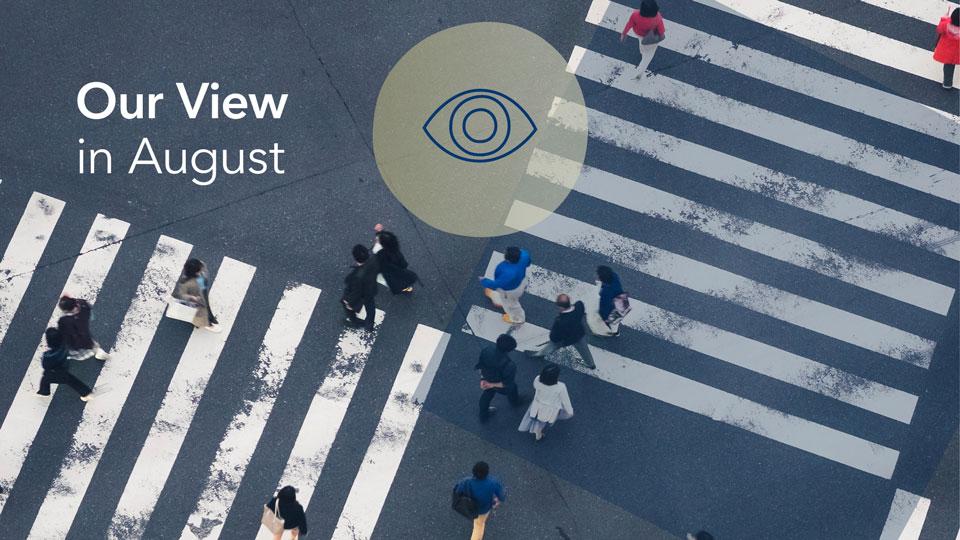Digital Transformation of Healthcare - Alexa: I’ve got a tummy ache
Frick’s general practitioner has referred him directly to the hospital. This isn’t the first time he’s gone to the family doctor due to abdominal pain, but this time the md concluded it was best to have Frick admitted to hospital. But at the hospital, they miss access to a central patient file to see, for example, information past treatments and their results, prescribed medications or x-rays to be shared across all disciplines of the medical care system. Thus, misunderstandings and delays can result and inevitably lead to longer hospital stays and follow-up treatments. And as the proportion of the population comprised of older people steadily increases, so do the health-related costs (see VP Bank study on the future of the healthcare system “Global Health Care: Invest in Health” published in September 2018).
A Eurostat study reveals that one-eighth of Switzerland’s economic output (gross domestic product) can be attributed to healthcare services; in the EU, the average proportion is only around 10%. And according to the U.S. Centers for Medicare & Medicaid Services, this figure stands at 17.9% in America. So, in this regard, the digital transformation of the healthcare system not only helps to reduce costs, it also improves the quality of treatment.
This is the third episode of our series «Digital transformation - The path to the future». The series draws on five drivers to explain how digitalisation is changing business models and how investors can benefit from this evolution. Find the introduction and the overview to the series here.
The digital revamp of treatment processes has attracted a great deal of attention from technology companies. The standardisation and hence increased security of so-called “Cloud-based” data storage make it possible to cluster patient information cleverly and to evaluate it analytically with the aid of artificial intelligence.

Google, Microsoft, Tencent as well as Intel and Samsung are also supporting start-ups in this field, with data management and analytics, genome research, clinical studies, diagnostics and digital administration receiving the greatest amount of financial backing. With more than 20 companies under its corporate umbrella, Google can attend to the entire value chain of a hospital. These services range from patient transport, diagnosis and patient observation, to medical equipment, software solutions for virtual operating theatres and the ordering of medical supplies. Microsoft focuses more on organising the information flow, patient monitoring and telemedicine.
Machines in the service of mankind
Another promising approach for reducing healthcare costs is the use of robotics – not as a mechanical nurse, but rather in diagnostics of the quality of treatment and in terms of rehabilitation. Today, eleven times more robots are used for surgery in hospitals than eight years ago, and that figure will almost double again by 2021. One example of this is the Mako system from medtech specialist Stryker, an apparatus used primarily for hip and knee joint operations. Its robot arm assists during the surgery and demonstrably reduces post-operative costs by up to two-thirds in the 90 days following the operation. In 2018, the system was used in over 100,000 operations worldwide. But even this impressive performance has not made Stryker the global market leader; it ranks somewhere between second and fourth, depending on the specific area of application.

From the laboratory to the sidewalk
Other areas where robotics are rapidly growing in the healthcare realm focus on diagnosis, orthopaedics, rehabilitation and hygiene, but also on the training of doctors and medical specialists. The latest advances, especially in orthopaedics, open up entirely new horizons. The MIT Biomedical Devices Design Laboratory, for example, has crafted independently balancing arm prostheses that “observe” their own movements and correct them if necessary. They come very close to the movement sequences and use of one’s own limbs. This technology is already so far advanced that the bridge between research and actual human application has been crossed. Since 2017, so-called exoskeletons are being used in the field of rehabilitation: mechanical prostheses are attached externally to the limbs in order to assist in bearing weight and bringing the patient’s physical capabilities back to normal after severe injuries.
Future Health Basket
As digital transformation relentlessly progresses in the healthcare sector, above-average growth potential is in the making for many companies. The actively managed “VP Bank Future Health Basket” certificate takes this trend into account and invests in the shares of 37 companies from four interrelated areas: “Demography”, “Economy”, “Digitalisation” and “Healthcare Technology”. Through targeted diversification, opportunities across the entire digital value chain are seized upon whilst heightened stock-specific risks are significantly minimised.
Please ask your personal client advisor for more information
Responsible for content
Bernd Hartmann, Head CIO Office
Harald Brandl, Senior Equity Strategist
Important legal information
This document was produced by VP Bank AG (hereinafter: the Bank) and distributed by the companies of VP Bank Group. This document does not constitute an offer or an invitation to buy or sell financial instruments. The recommendations, assessments and statements it contains represent the personal opinions of the VP Bank AG analyst concerned as at the publication date stated in the document and may be changed at any time without advance notice. This document is based on information derived from sources that are believed to be reliable. Although the utmost care has been taken in producing this document and the assessments it contains, no warranty or guarantee can be given that its contents are entirely accurate and complete. In particular, the information in this document may not include all relevant information regarding the financial instruments referred to herein or their issuers.
Additional important information on the risks associated with the financial instruments described in this document, on the characteristics of VP Bank Group, on the treatment of conflicts of interest in connection with these financial instruments and on the distribution of this document can be found at https://www.vpbank.com/Disclaimer_en.pdf



Add the first comment